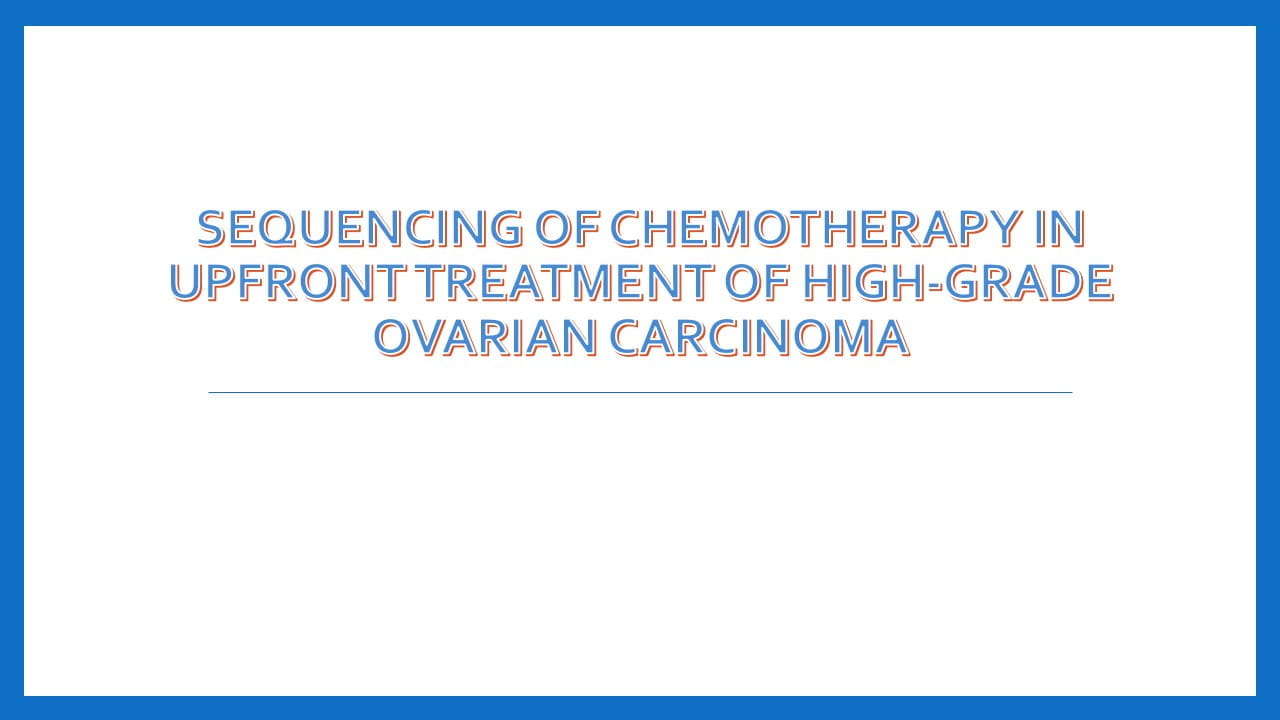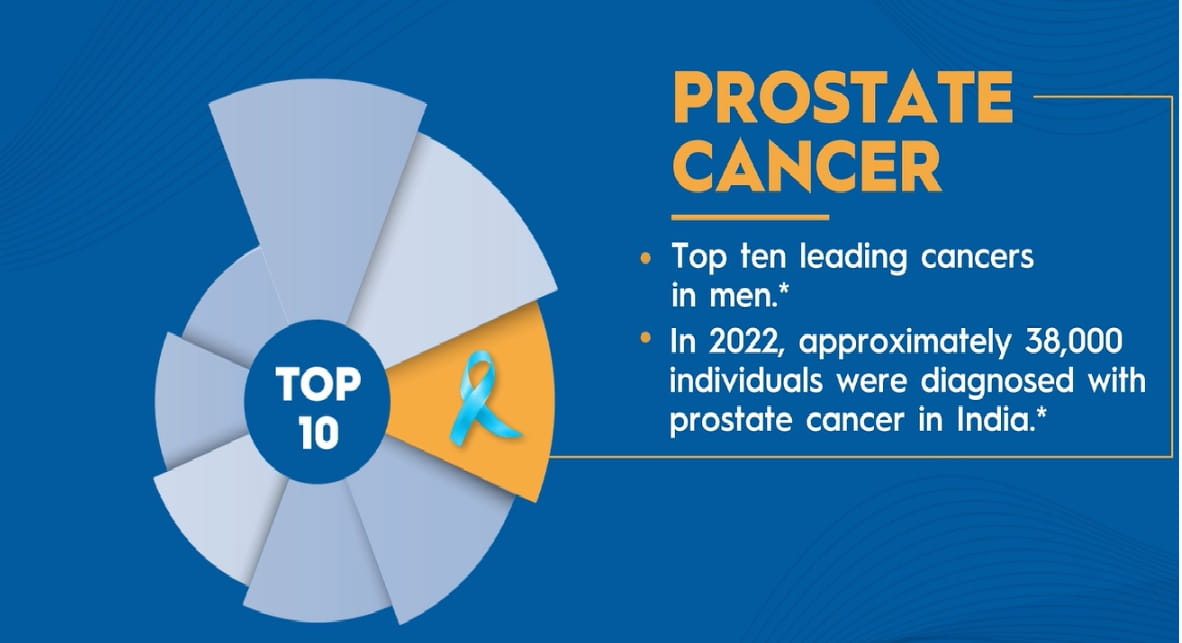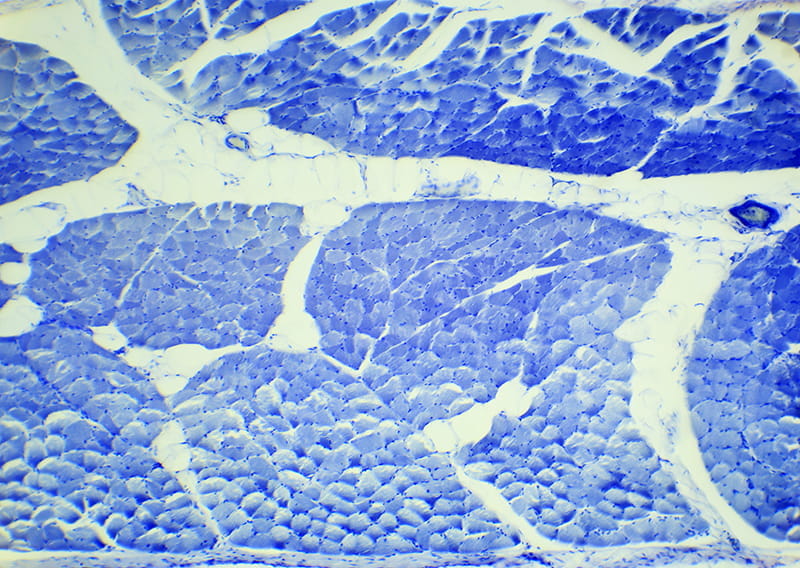COMPASSION-16 Subgroup Analyses: Cadonilimab with Platinum-Based Chemotherapy ± Bevacizumab for Persistent, Recurrent, or Metastatic Cervical Cancer (R/M CC)
- Cadonilimab significantly improved PFS and OS across all subgroups, defined by age, bevacizumab use, prior CCRT, metastatic status, PD-L1 CPS, and platinum therapy.
- In patients <65 years, median PFS was 13.5 mo (HR - 0.68) in those treated with cadonilimab vs. 9.5 mo with placebo (HR - 0.69).
- In patients ≥65 years treated with cadonilimab, median PFS was 12.0 mo (HR - 0.39) vs. 7.4 mo for placebo (HR - 0.49).
- The study findings support cadonilimab combined with standard treatment as a promising option for patients with R/M CC.
Reference
Yang Sun et al, Cadonilimab plus platinum-based chemotherapy ± bevacizumab for persistent, recurrent, or metastatic cervical cancer: Subgroup analyses of COMPASSION-16.JCO 43, 5509, (2025).
Efficacy of Nimotuzumab Combined with Chemotherapy as First-Line Treatment in Stage IVB Recurrent or Persistent Cervical Squamous Cell Carcinoma
- Patients with stage IVB recurrent cervical cancer, the mOS was 15.7 mo for the nimotuzumab (nimo) plus chemotherapy group versus 12.4 mo for the control group, indicating a potential survival benefit.
- mPFS was also improved in the nimo arm at 7.4 mo compared to 5.6 mo in the control arm, suggesting enhanced disease control.
- Among recurrence patients, mOS was significantly higher at 21.7 mo for the nimo group versus 12.4 mo for controls, with median PFS of 7.9 mo vs. 5.2 mo, respectively.
- Safety profiles were similar; 14.5% of nimo patients experienced serious adverse events compared to 23.6% in controls, with no significant differences in adverse event rates between groups.
Reference
Jusheng An et al, Nimotuzumab combined with chemotherapy in the first-line treatment for patients with stage IVB, recurrent or persistent cervical squamous cell carcinoma: A multi-center, randomized, double-blind, and controlled study. JCO 43, 5510, (2025).
Effects of Durvalumab Plus Carboplatin/Paclitaxel Followed By Durvalumab with/without Olaparib on Circulating Tumor DNA in Endometrial Cancer: A Post Hoc Exploratory Analysis
- Baseline ctDNA was associated with shorter PFS in 718 patients with endometrial cancer.
- Durvalumab plus carboplatin/paclitaxel was associated with significant reductions in ctDNA detection at C9D1 during chemotherapy vs carboplatin/paclitaxel at C3D1.
- Low re-emergence of ctDNA (due to a lower proportion of patients switching from no detectable ctDNA to detectable ctDNA between C7D1 and C9D1) was achieved during maintenance with durvalumab plus carboplatin/paclitaxel in both mismatch repair deficient and MMR proficient (pMMR) patients.
- Olaparib maintenance treatment addition to carboplatin/paclitaxel + durvalumab was associated with further reduction of detectable ctDNA at C9D1 vs carboplatin/paclitaxel + durvalumab (48% vs 17%) due to increased ctDNA clearance from C7D1 to C9D1 in pMMR patients.
Reference
Westin S., et al. Durvalumab plus carboplatin/paclitaxel followed by durvalumab with or without olaparib as first-line treatment for endometrial cancer: Longitudinal changes in circulating tumor DNA. JCO 43, 5512, (2025).
DREAMseq Phase III Trial: Nivolumab/Ipilimumab Achieves Better Efficacy than Dabrafenib/Trametinib in BRAFV600-mutant Metastatic Melanoma
- Nivolumab/ipilimumab first treatment sequence achieved the primary endpoint of 2-yr overall survival in higher number of patients as compared to dabrafenib/trametinib first sequence (68.3% versus 54.1% patients, p < 0.01) in 267 treatment-naive patients with BRAFV600-mutant metastatic melanoma (BRAFV600m MM).
- The 5-yr overall survival doubled, and 5-yr progression-free survival (PFS) tripled with nivolumab/ipilimumab first treatment sequence as compared to dabrafenib/trametinib first sequence.
- At disease progression (PD), 30 patients switched from nivolumab/ipilimumab to dabrafenib/trametinib and 52 patients switched from dabrafenib/trametinib to Nivolumab/ipilimumab.
- Nivolumab/ipilimumab first treatment sequence demonstrated longer duration of response (76% vs. 24% patients remained in response), lower percent unconfirmed responses (16.9% vs. 41.2% patients), and lower (24 patient vs. 44 patients) and delayed CNS PD (12.2 mo vs. 8.4 mo, p< 0.01) as compared to initial dabrafenib/trametinib therapy.
Reference
Atkins M., et al. DREAMseq: A phase III trial of treatment sequences in BRAFV600-mutant (m) metastatic melanoma (MM). Final clinical results. JCO 43, 9506, (2025).
ARCHES Study: Enzalutamide plus Androgen-Deprivation Therapy (ADT) Remains Standard-of-care in Metastatic Hormone-Sensitive Prostate Cancer
- Enzalutamide plus ADT achieved 30% higher survival as compared to placebo plus ADT given for a median follow-up of 61.4 months (HR 0.70; p=0.0003) in 1150 patients with metastatic hormone-sensitive prostate cancer.
- Also, enzalutamide plus ADT maintained its survival benefit across the subgroups analyzed (i.e. treatment with/without prior docetaxel and synchronous or metachronous patients), including a 36-month improvement in median overall survival in high-volume patients.
- These benefits were observed even after a substantial cross-over in the cohort (31.9% placebo + ADT patients crossed over to open-label enzalutamide + ADT).
Reference
Armstrong A., et al. ARCHES: 5-year follow-up overall survival (OS) analysis of enzalutamide (ENZA) plus androgen-deprivation therapy (ADT) in patients (pts) with metastatic hormone-sensitive prostate cancer (mHSPC). JCO 43, 5005, (2025).
ETCTN trial: Olaparib plus Radium-223 Therapy More Effective than Radium-223 in Castration-Resistant Prostate Cancer with Bone Metastases
- Olaparib plus radium-223 demonstrated superior radiographic progression-free survival (rPFS) as compared to radium-223 (median 8.6 vs. 4.0 months, HR 0.51, p=0.005) in 103 patients with castration-resistant prostate cancer with bone metastases.
- This benefit was seen irrespective of the status of homologous recombination repair gene (HRR+: HR 0.52 and HRR-: HR 0.54)
- Olaparib plus radium-223 therapy was associated with longer time to next treatment (12 vs. 7.7 months) and higher 12-month overall survival (74% vs. 71%) as compared to radium-223.
- Olaparib plus radium-223 had a manageable safety profile as compared to radium-223 (grade ≥3 treatment-related adverse events: 56% vs. 35%); most common side effects were anemia and reduction in lymphocytes, platelets and neutrophils.
Reference
McKay R., et al. A multicenter, randomized, phase 2, investigator-initiated ETCTN trial of olaparib + radium-223 vs. radium-223 in men with castration-resistant prostate cancer (CRPC) with bone metastases (BM) (COMRADE): Initial efficacy and biomarker analysis. JCO 43, 5007, (2025)
STAMPEDE Study: Role of Multimodal Artificial Intelligence (MMAI) Model in High-Risk Non-Metastatic Prostate Cancer Patients on Androgen Receptor Pathway Inhibitors (ARPI)
- Continuous MMAI scores were significantly associated with poorer prostate cancer specific mortality (PCSM, 1.65, p<0.001), metastasis-free survival (1.42, p<0.001) and distant metastasis (1.54, p<0.001) in 1336 men with high-risk non-metastatic prostate cancer.
- Optimal ARPI MMAI cut-point identified biomarker-positive patients who had significantly higher PCSM versus biomarker-negative patients.
- PCSM lowered in biomarker-positive patients treated with ARPI (0.42, p=0.003); treatment benefit was absent in biomarker-negative patients (0.85, p=0.45).
- ARPI biomarker-positive patients had lower estimated 5-year PCSM versus. standard of care androgen deprivation therapy (9% vs. 17%).
- This was the first study to show that a validated MMAI algorithm identified high-risk non-metastatic prostate cancer patients most likely to benefit from the addition of ARPI.
- The study threw light on the value of MMAI model in achieving better treatment decisions and sparing biomarker-neg patients from avoidable toxicities.
Reference
Parker C., et al. Multimodal artificial intelligence (MMAI) model to identify benefit from 2nd-generation androgen receptor pathway inhibitors (ARPI) in high-risk non-metastatic prostate cancer patients from STAMPEDE. JCO 43, 5001, (2025).
IRONMAN Registry: Prognostic Significance of PSA>0.2 after 6-12 Months Treatment for mHSPC Intensified by Androgen-Receptor Pathway Inhibitors (ARPI)
- The analysis included 1288 patients treated with ADT & ARPI within 90 days of IRONMAN enrolment.
- Intensification agents included: abiraterone acetate (44.7%), apalutamide (22.0%), Darolutamide (10.5%), or enzalutamide (22.8%). Moreover, 8.7% received docetaxel in addition to ADT-ARPI.
- PSA recorded at 6-, 12-month landmarks respectively were: <0.02 (10%, 21%); 0.02-0.2 (41%, 45%); >0.2 (49%, 34%). Nearly 70% of patients with 6-month PSA >0.2 were retained at 12-month mark.
- The PSA >0.2 stratum had significantly worse 3-yr OS the PSA<0.02 stratum (45.3 vs. 92.7%, p<0.001), indicating a 7-fold higher mortality risk & an 8-fold higher progression risk.
- PSA <0.02 at 6-12 months defined the best prognosis & may have a vital role in planning the de-intensification strategies.
Reference
Michael Ong, et al. Prognostic significance of PSA>0.2 after 6-12 months treatment for metastatic hormone-sensitive prostate cancer (mHSPC) intensified by androgen-receptor pathway inhibitors (ARPI): A multinational real-world analysis of the IRONMAN registry. . JCO 43, 5002, (2025).
Insights from CARTITUDE-1: Long-Term Remission (≥ 5 yrs) & Survival after Treatment with Ciltacabtagene Autoleucel (cilta-cel) in Patients with Relapsed/Refractory Multiple Myeloma
- The study population of CARTITUDE-1 received a single cilta-cel infusion, median OS at 5-yr was 33% & patients remained progression free for ≥5 yr after cilta-cel, without further MM treatment suggestive of curative potential in RRMM patients
- A higher fraction of naïve T cells in the drug product, lower neutrophil to T cell ratio, higher Hb& platelets at baseline, & higher effector-to-target ratio (Cmax to sBCMA at baseline) were all significantly associated with ≥5 yr progression free status.
- Significantly higher CD4 central memory CAR+ T cell subsets & CAR+ T cells at Cmax indicated a positive correlation with the activation markers CD38, CD25, & PD-1.
- At 60.3 mo median follow-up, median OS for CARTITUDE-1 population was 60.6 mo (95% CI, 41.9–NE), continued follow-up revealed 3 additional patients with a second primary malignancy.
- No new cases of movement & neurocognitive disorders were reported.
Reference
Peter Voorhees, et al. Long-term (≥5 year) remission and survival after treatment with ciltacabtagene autoleucel (cilta-cel) in CARTITUDE-1 patients (pts) with relapsed/refractory multiple myeloma (RRMM). JCO 43, 507, (2025).
DANTE Phase III Trial: Comparison of 1 year versus Minimum 2 years of Anti-PD1-based Immunotherapy as First-line Treatment for Metastatic Melanoma
- The DANTE phase III trial is a study comparing 1 year of anti-PD-1 immunotherapy versus a minimum of 2 years in first-line treatment for metastatic melanoma.
- The trial aims to determine if a shorter duration of treatment is non-inferior to the current standard of care.
Reference
Sarah Danson, et al. Comparison of 1 year versus minimum 2 years of anti-PD1-based immunotherapy as first-line treatment for metastatic melanoma: Results of the DANTE phase III trial. JCO 43, LBA9508, (2025).




